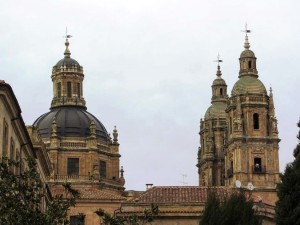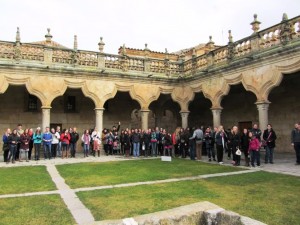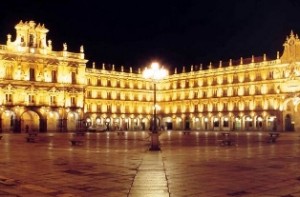

SALAMANCA, CITY OF MONUMENTS AND UNIVERSITY TRADITION
Located in the south-west of the region of Castilla y León, and a little over 200 km from Madrid, the city of Salamanca is home to some 150,000 inhabitants. Designated a Unesco World Heritage City, it is possibly one of the best known Spanish cities internationally. Salamanca has always been a reference in university life, and such well-known figures in the world of thinking and culture as Nebrija, Fray Luis de León, Francisco de Vitoria, or Unamuno are linked to the city.
PROGRAMME OF THE TRIP
In the morning, there will be a guided tour around the city, starting off at the Convent of Saint Stephen, and visiting the Main Square, the House of Shells, the Patio de las Escuelas and concluding by the cathedrals.
During this visit, students will have the chance to appreciate first hand and compare the main styles of Spanish and world art. In the afternoon, after the free time, the group will meet up to visit the inside of the cathedrals.
TOUR AROUND THE CITY
During our tour of the city, we will be visiting some of the city’s most important areas:
The river Tormes and the Roman Bridge: like so many other places, old Salamanca sprang up and grew near a river. The city’s foundation dates back to Roman times, testimony to which is the bridge spanning the river Tormes, its oldest arches dating back to the first century. These tree lined areas afford the chance to view the outline of the city’s monuments.
Dominican Convent of Saint Stephen: although the Dominicans reached Salamanca drawn by the university in the mid 13th century, construction on the modern-day building began in the early 16th century adopting the Gothic style, the work running on into the following century. The decoration of the church façade is a fine example of Plateresque, a Spanish artistic style of the early Renaissance.
Main Square: is a must for all visitors to the city, and is one of the most important Baroque monuments in Spanish architecture. It was built in the first half of the 18th century and ever since has been the meeting point for locals and visitors alike.
House of Shells: an example of late 15th century civil Gothic architecture, it was built as a home for a member of the high Castilian nobility and today houses the National Public Library. It is known for the 300-plus shells that adorn its façade and which give the house its name.
La Clerecía (former College of the Holy Spirit): a Baroque style building built in the 17th century by Jesuits. It is currently home to the Pontifical University of Salamanca, a private Catholic university set up in the middle of the last century.
The University: a group of buildings that formed part of the former University of Salamanca, prominent amongst which are the Escuelas Mayores (Upper Schools) and Escuelas Menores (Lower Schools). The Escuelas Mayores give their name to what was the main university building, erected in the 15th century. Every day, numerous visitors gaze at its 16th century Plateresque style façade in search of the famous “frog”.
The Cathedrals: other Spanish cities have two cathedrals. However, Salamanca is unique in that the two buildings are joined, sharing a wall and a tower. This enables visitors to enjoy a unique experience; being able to admire and compare two different buildings which have two well-defined styles: the so-called Old Cathedral, Romanesque in style, and the New Cathedral, one of the last Spanish Gothic buildings.



